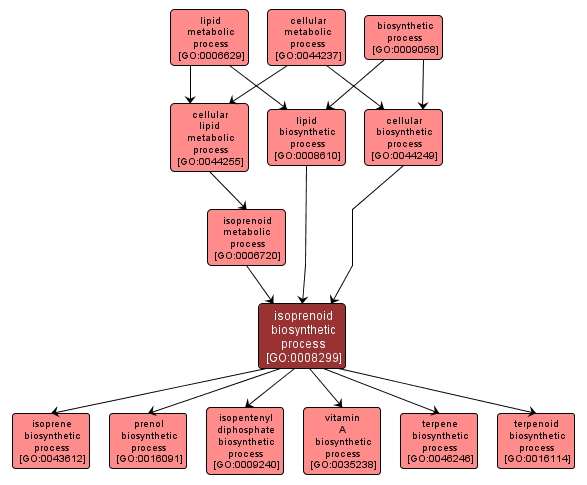GO TERM SUMMARY
|
| Name: |
isoprenoid biosynthetic process |
| Acc: |
GO:0008299 |
| Aspect: |
Biological Process |
| Desc: |
The chemical reactions and pathways resulting in the formation of any isoprenoid compound, isoprene (2-methylbuta-1,3-diene) or compounds containing or derived from linked isoprene (3-methyl-2-butenylene) residues. |
Synonyms:
- isoprenoid biosynthesis
- isoprenoid formation
- polyisoprenoid synthesis
- polyterpene biosynthetic process
- polyisoprenoid anabolism
- polyisoprenoid biosynthesis
- polyisoprenoid biosynthetic process
- polyisoprenoid formation
- polyterpene biosynthesis
- GO:0009241
- isoprenoid anabolism
- isoprenoid synthesis
|














